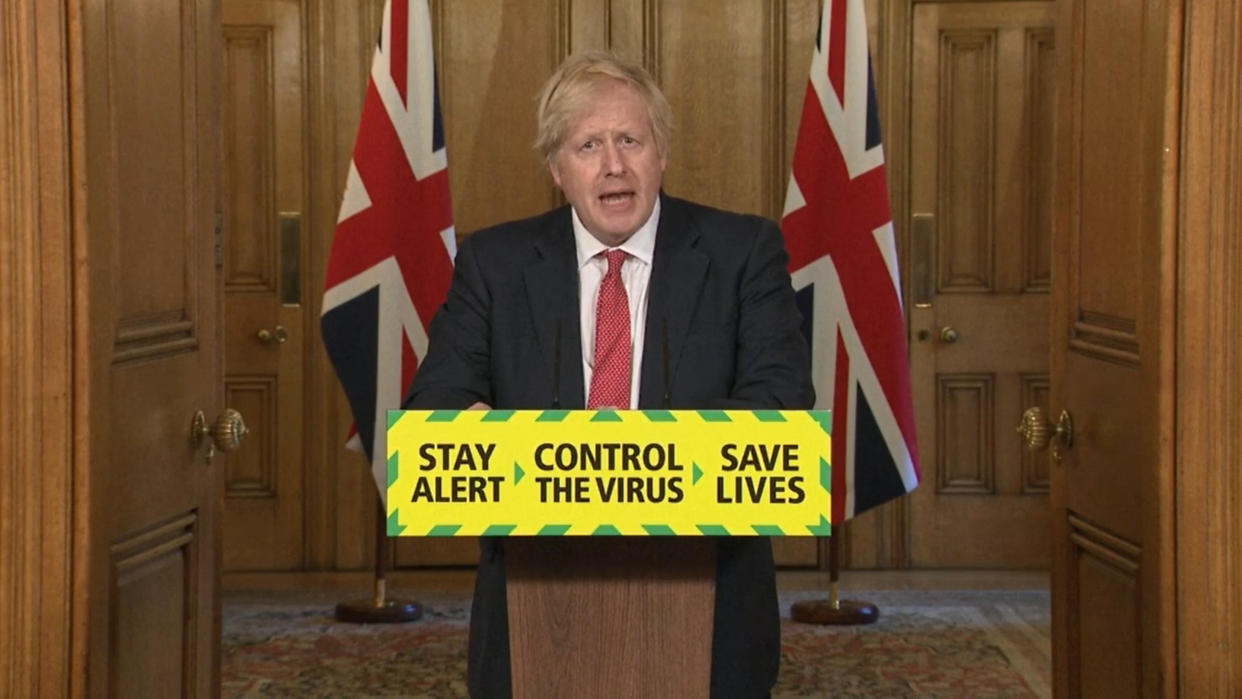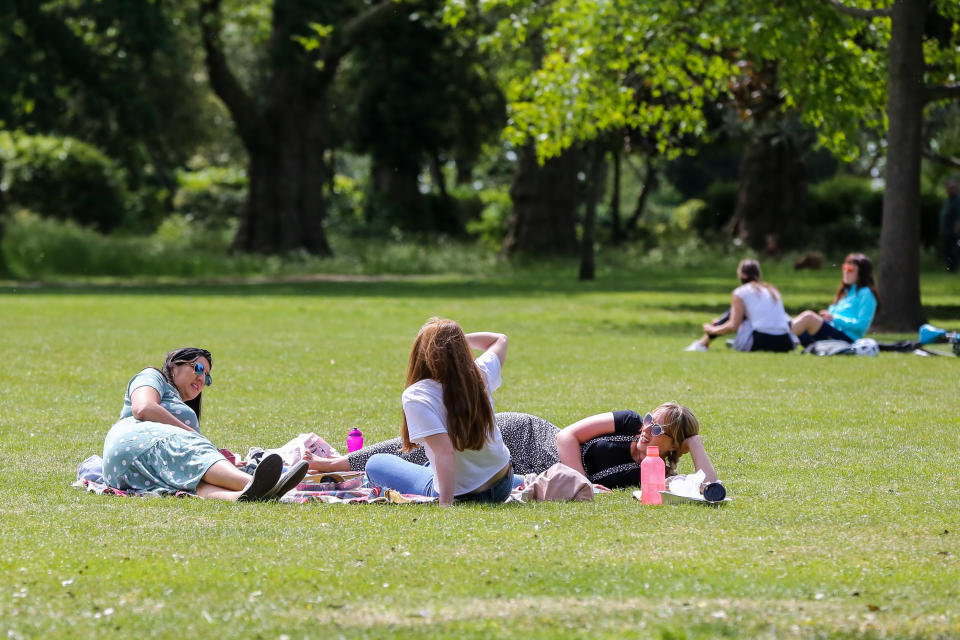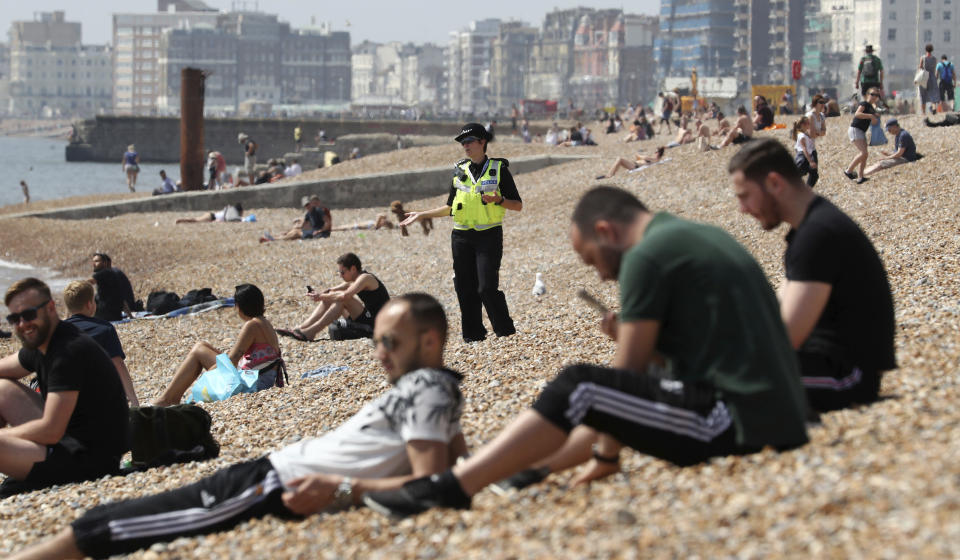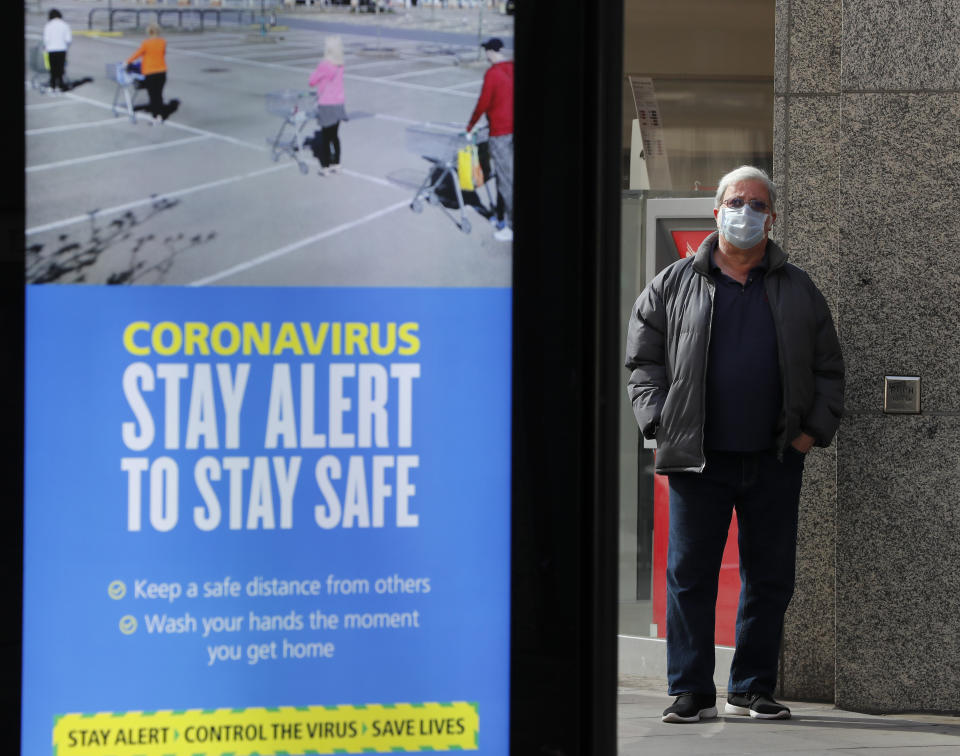Five ways the government has manipulated us to obey social distancing rules

A document reveals what the government was told it could do to convince people to practise social distancing, as the importance of complying with the new test and trace scheme was emphasised this week.
Launched on Thursday, it will allow contact tracers to get in touch with people who have been close to an infected person and advise them to self-isolate for 14 days.
It is not mandatory to do so, but health secretary Matt Hancock said on Wednesday it is the “civic duty” of Britons to comply.
A paper on the government website reveals how Boris Johnson’s science advisers were given options to ensure the public complied with social distancing when it was introduced in March.
“Options for increasing adherence to social distancing measures”, which was discussed at the government’s Scientific Advisory Group for Emergencies (Sage) in late March, outlined a strategy including ideas about language used, persuasion, incentivisation and coercion.
Perceived threat
The paper highlighted a worry that a “substantial number of people still do not feel sufficiently personally threatened” at that time.
It said they could have been “reassured” by low death rates in their demographic group, and that a “good understanding of the risk” seemed to lead to people adopting social distancing in Hong Kong.
“The perceived level of personal threat needs to be increased among those who are complacent, using hard-hitting emotional messaging,” the document stated under its “persuasion” heading.
Read more: Standing 1m from person for 1 min 'has same risk as 2m for 15 mins'
“To be effective this must also empower people by making clear the actions they can take to reduce the threat.”
Days after the report was produced, ahead of a weekend of expected good weather in early April, transport secretary Grant Shapps urged people to remember “that anyone can get coronavirus and anyone can spread it”.
Positive messaging
Also under the “persuasion” heading was a passage stressing that “people need to see self-protective actions in positive terms and feel confident that they will be effective”.
The paper emphasised the importance of people understanding that the chances of severely ill people surviving COVID-19 would rely on the health system’s capacity being increased.
This would be helped by slowing the increase in infections, and “messaging about actions need to be framed positively in terms of protecting oneself and the community”, the advice stated.
Politicians have repeatedly thanked the public for complying with government instructions and stressed the message of “stay at home, protect the NHS, save lives” when it used that slogan, now dropped for England.
Boris Johnson said on 10 May, when unveiling the roadmap for England’s way out of lockdown, that it was “thanks to your effort and sacrifice in stopping the spread of this disease that the death rate is coming down and hospital admissions are coming down”.
Social approval and disapproval
Another element of getting people to comply with social distancing would be both the incentive of social approval and coercion of social disapproval, the document said.
It added that good practice should be highlighted and strong encouragement should be provided in official communications.
The document said that members of a community can be prompted to encourage social distancing, which would have a “beneficial spill-over effect of promoting social cohesion”.

It added that disapproval in the community could also play a role by discouraging people from failing to comply with social distancing measures.
However, this would need to be “carefully managed to avoid victimisation, scapegoating and misdirected criticism”, the paper added.
Messaging that promoted a “strong collective identity” would be needed, and the document also said that while the effects of social disapproval should be considered, “unwanted negative consequences” could become an issue.
Social disapproval was seen in action with people calling the police on those they believed broke lockdown rules and repeated criticism that gatherers around Westminster Bridge for the clap for carers were not socially distancing.
It can also be seen in the new insult “covidiot”, used to criticise someone not following social distancing or lockdown rules.
Compulsion
Another heading under “coercion” was a section called “compulsion”.
The paper pointed to other countries that had introduced mandatory self-isolation without major public unrest, and referred to data showing 64% of adults in Great Britain would have supported a lockdown for London at the time, which was experiencing a well publicised growing outbreak.
“Consideration should be given to enacting legislation, with community involvement, to compel key social distancing measures,” the report said.

It also made reference to compulsory use of seat belts in vehicles, which it said suggested that with enough preparation, “rapid change can be achieved”.
Lockdown rules have been enforced, with fines increasing for people falling foul of some of the coronavirus restrictions.
Specificity
The paper was critical of phrases in official advice, which included “avoid contact with someone who is displaying symptoms of coronavirus”, “significantly limit your face-to-face interaction with friends and family if possible” and “avoid non-essential use of public transport when possible”.

Phrases such as “non-essential” and “significantly limit” were criticised for being “open to wide differences in interpretation” which could “lead to confusion about exactly what people are being required to do”.
The document said that guidance should explain who needed to do what, why, and communicate this through channels “that provide personalised advice”, such as texts and an interactive website.
The government was criticised when it switched from its “stay at home” message to “stay alert” for England, with Scottish first minister Nicola Sturgeon describing it as “vague”.
Coronavirus: what happened today
Click here to sign up to the latest news, advice and information with our daily Catch-up newsletter
Read more about COVID-19
How to get a coronavirus test if you have symptoms
What you can and can’t do under lockdown rules
In pictures: How UK school classrooms could look in new normal
How public transport could look after lockdown
How our public spaces will change in the future
Help and advice
Read the full list of official FAQs here
10 tips from the NHS to help deal with anxiety
What to do if you think you have symptoms
How to get help if you've been furloughed

 Yahoo News
Yahoo News 

